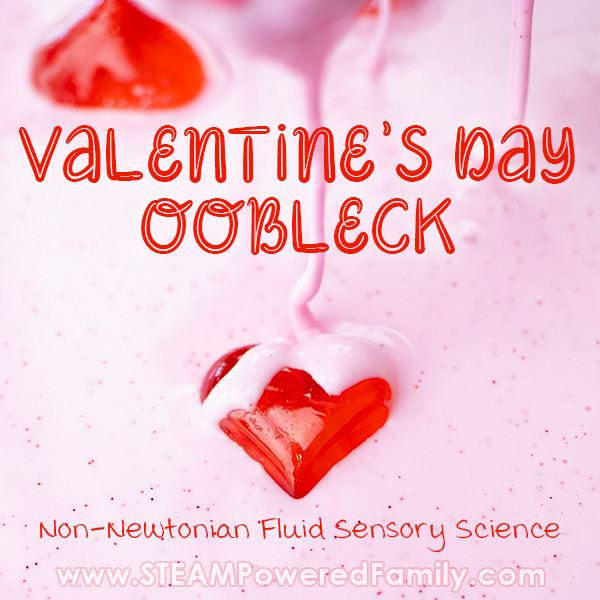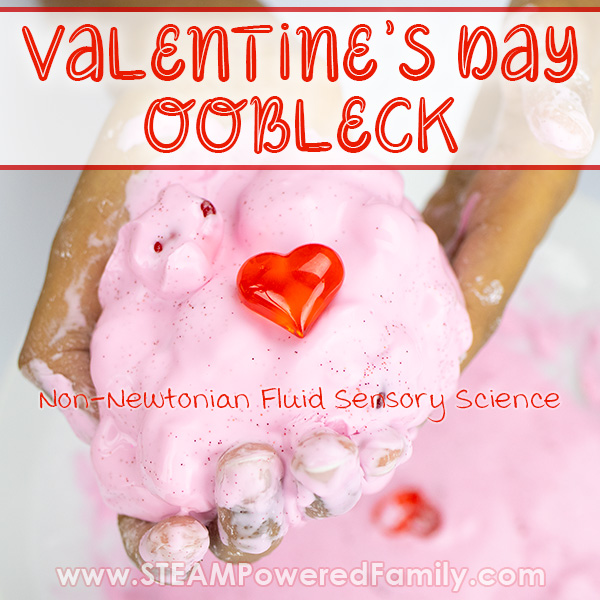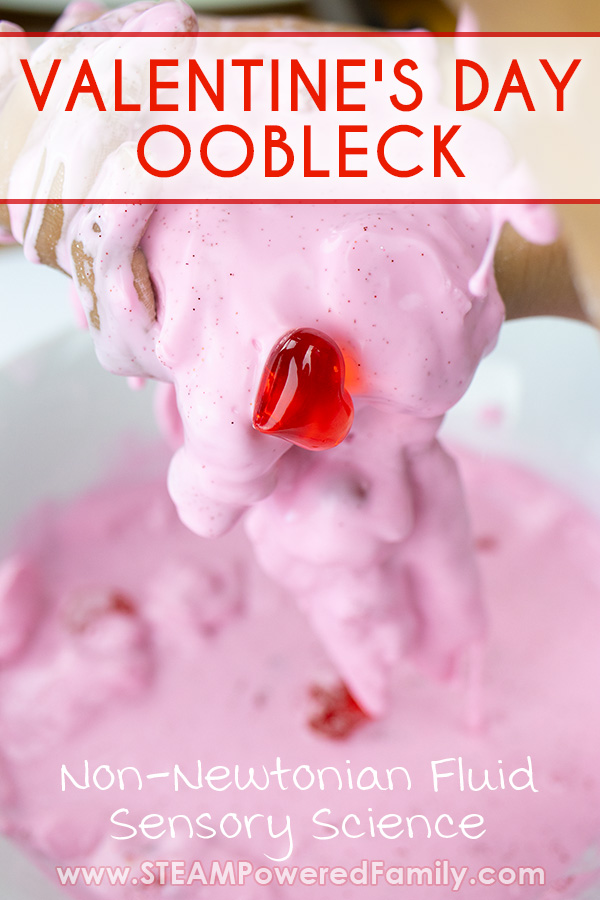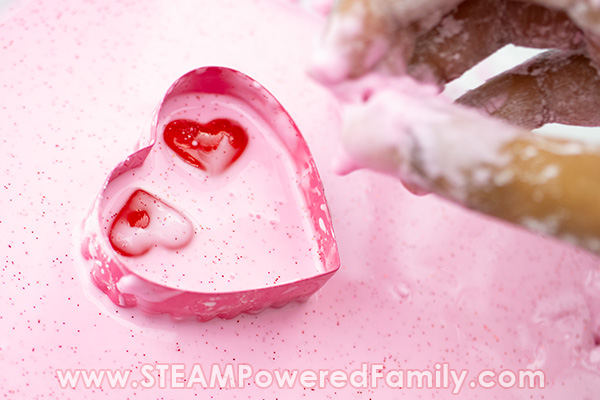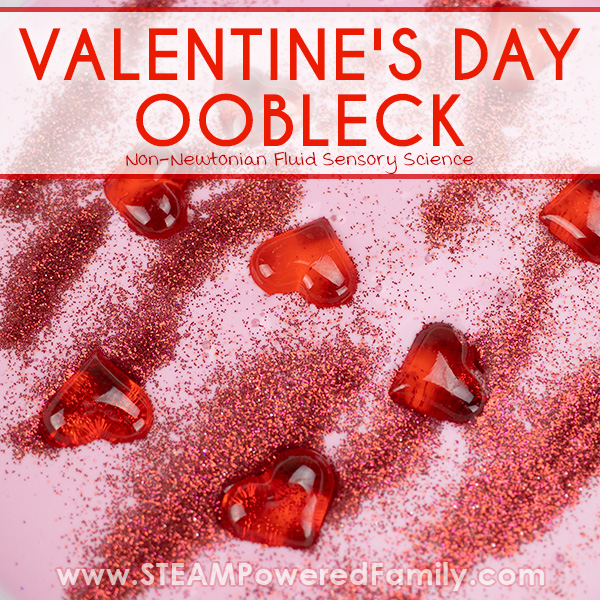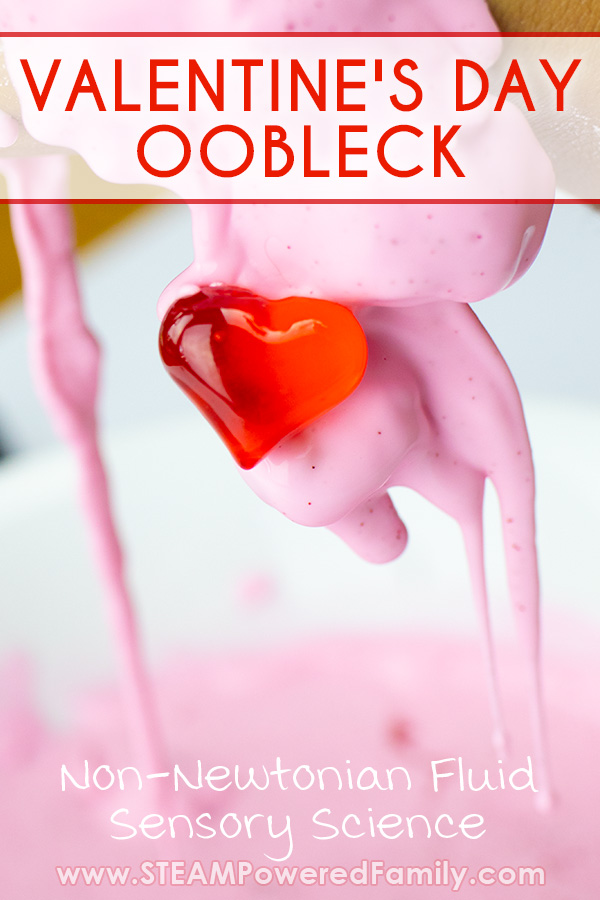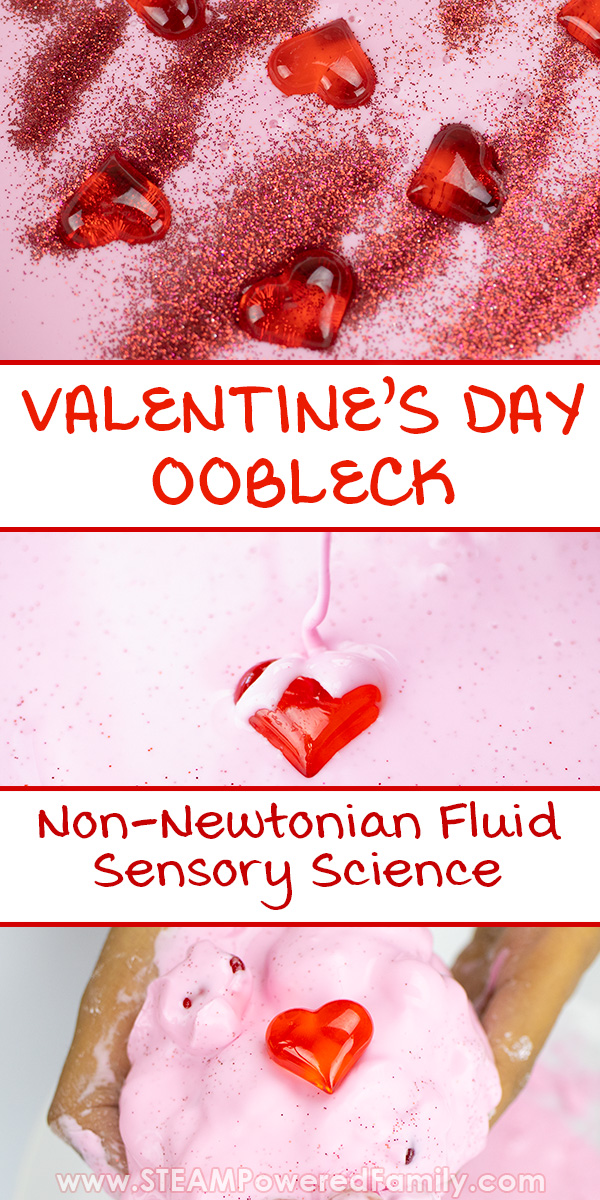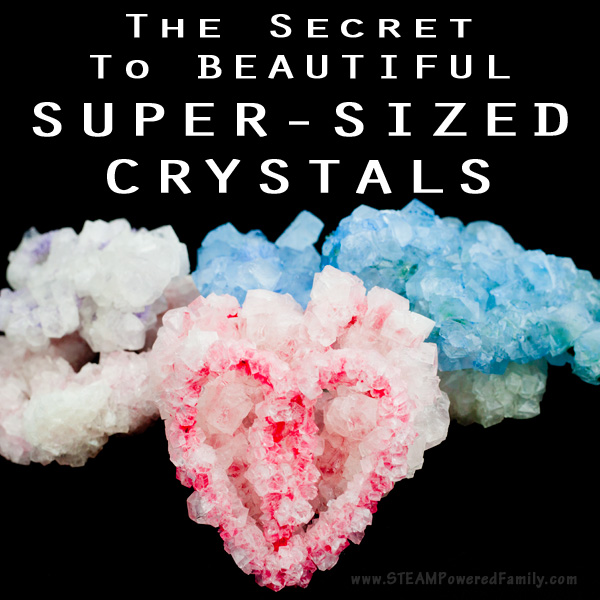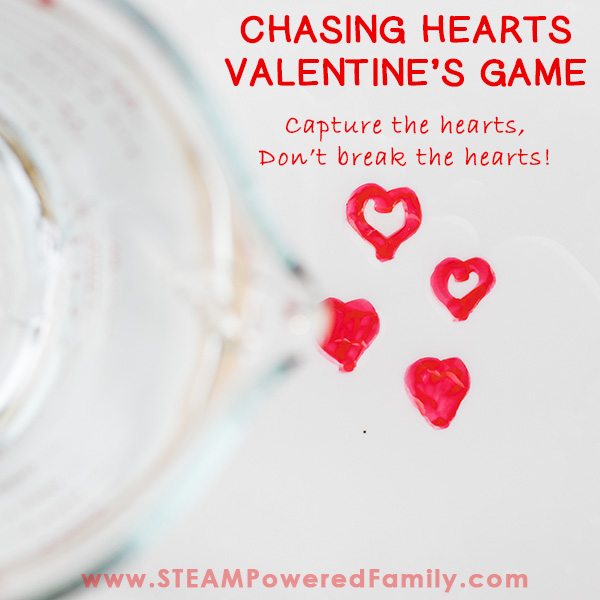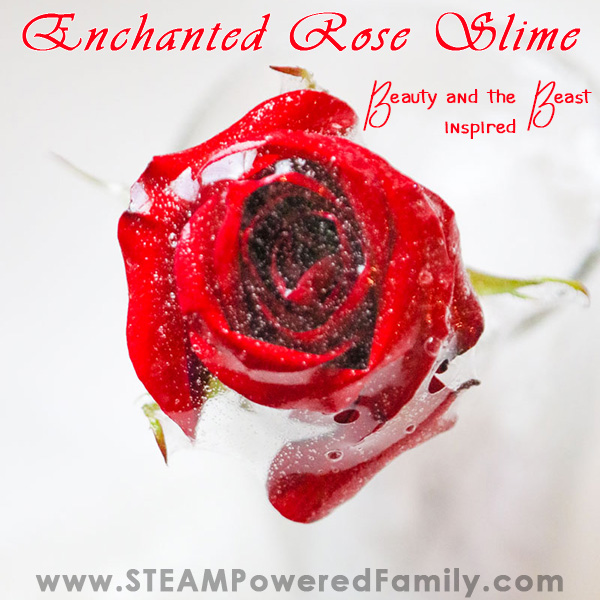How To Make Valentine’s Day Oobleck – Sensory Science
This Valentine’s Day Oobleck recipe was so much fun to make. It’s been crazy cold and dreary out. The kind of weather that has all of us asking “why do we live where the air hurts our face?!” So we needed something fun and bright to make surviving this cold a little easier. With Valentine’s Day quickly approaching we decided we wanted to do some fun sensory science, and around here that means it’s oobleck making time!
VALENTINE’S DAY SCIENCE – OOBLECK RECIPE
What is Oobleck?
I’m always amazed when I meet people who don’t know about Oobleck. I mean seriously, this stuff is amazing! Plus there is some incredible science behind it, making it a fantastic lesson and sensory experience.
Oobleck is a non-Newtonian Fluid. This means it doesn’t behave like normal fluids. In fact, it is completely bizarre and fascinating. It becomes solid under pressure and liquefies when the pressure is released. This means you can do some really cool things with it.
Best of all you make it with items in the pantry. Which means it is non-toxic and taste safe, plus very budget friendly. Since it is a kitchen science project using common items, it also makes oobleck an easy science experiment to do with no planning or preparation. Perfect for those days when you need to get everyone up and moving, doing some hands on activities.
Oobleck got it’s name from a really cool source, Dr. Seuss! You can read about the history of how Oobleck got it’s name here.
How Does Oobleck Turn Into a Solid?
So now we know that Oobleck is this strange fluid (and yes, the state of matter of oobleck is a fluid) that disobeys the rules of fluid dynamics as stated by Sir Issac Newton. But how and why? This phenomenon is called “shear thickening” and it occurs in materials made up of microscopic solid particles suspended in a fluid. Oobleck therefore is a suspension. The solid molecules are not dissolving in the liquid, they are simply suspended floating about like happy little molecules.
When we apply pressure to oobleck, those molecules squish together and behave like a solid.
But remove the pressure and those molecules go back to floating about and we have flowing liquid behaviours once again.
A great way to see how oobleck is a suspension is to leave a batch on the table for a while and see what happens. You should notice that it separates fairly quickly. The suspended molecules settle to the bottom and the liquid rises to the top of the container.
Want to learn more about the science of oobleck? Check out our oobleck scientific investigation we did!
Valentine’s Day Oobleck Recipe
Making oobleck is so simple! All you need is to raid the pantry for:
2 cups cornstarch (or try it with tapioca flour, arrowroot, baby powder or, our favourite, potato!)
1 cup water (I recommend warm water, it makes for a nicer sensory experience)
Red food colouring
Glitter (optional, use biodegradeable options if desired)
Beads shaped like hearts
Scoops, cookie cutters (heart shaped), and other play tools (optional)
Large bowl
Measuring cup
An easy to clean area
How To Make Valentine’s Oobleck
Start by preparing the area. I recommend a table cover and an easy to clean floor covering. Do not use oobleck near your favourite carpet! If you are lucky enough to live somewhere with gorgeous weather, taking your oobleck outside is always fun.
In a large bowl add your cornstarch.
Measure out your water then add the food colouring. Mix.
Now add the coloured water to the cornstarch. Mix it together. You will immediately notice those non-Newtonian qualities at work! Slow, even pressure is best. Don’t try and stir quickly or move quickly. Pressure like that will make it solidify.
Once it is mixed sprinkle on some glitter. Do you notice anything?
Now try dropping some of the heart beads onto the oobleck. Now what do you notice? If you watch closely you can see the kinetic energy moving through the oobleck as the force of the dropping bead impacts with the oobleck. You can see how it gets hard for a moment, then liquifies allowing the bead to settle and sink into the oobleck. Pretty cool!
Now it’s time to play and explore! Keep in mind because of the way oobleck behaves things might get a little messy!
Use things like cookie cutters or scoops to see how the oobleck changes it’s behaviours. We find the most fascinating part is trying to scoop it and then watching as it impacts itself as if flows back into the bowl.
Check Out Our Video Of Valentine’s Day Oobleck Play Time!
How to Clean Up Oobleck
Once you are done playing with your oobleck you can remove anything you submersed in your oobleck and simply clean it with soap and water.
Oobleck should be thrown in the garbage. Because it is so thick and goopy it can cause serious issues with the plumbing if you dump a bunch of it down the sink. Once you have scrapped most of it into the garbage, simply wash the bowl with soap and water.
If you get Oobleck on the floor, wait a few minutes for it to dry. It will return to cornstarch powder making it easy to sweep or vacuum up.
Oh and unlike slime, if oobleck gets in your hair or clothes, it simply and painlessly washes out. The only possible issue is the food dye causing staining, especially if you have used a lot of food colouring. If you are worried about possible staining, reduce the amount of food colouring you are using. To date I have never had an issue with oobleck staining anything.
Storing Oobleck
Since Oobleck is a food based product, mold and bacteria growth is definitely an issue. I really don’t recommend storing oobleck. It takes only seconds to make and is very inexpensive. So make it, play with it, and toss it. That is what I HIGHLY recommend.
If you insist on trying to save it, you have two options that have worked for us. First you can let it dry out completely back to powder, then reconstitute it with water when you are ready to use it again. I still feel this method could lead to mold and bacteria issues, plus it seems like a crazy amount of work for 25 cents worth of cornstarch. But if you insist, you can give it a try.
The second option, which we did an experiment around and will share shortly, is to freeze your oobleck. The best bet is to place it in a freezer bag and freeze it. You may need to add some water once it thaws to get it back to non-Newtonian Fluid behaviours. Simply add a teaspoon of water and mix it in well. Repeat until you have proper non-Newtonian traits again.
Really though, I don’t believe this is the kind of product that should be saved.
MORE HANDS ON LEARNING

Valentine’s Day Oobleck Recipe
A fun heart themed oobleck recipe for valentine's using items in the pantry.
Supplies
- 2 cups cornstarch
- 1 cup water
- red food colouring
- glitter
- heart beads
Instructions
-
Add cornstarch to a large bowl.
-
Measure out the water in a cup and add the food colouring. Mix well.
-
Add the water to the cornstarch and mix carefully. Don't use too much pressure or speed as it will solidify under pressure.
-
Add glitter, beads and anything else you find interesting (cookie cutters are fun!)
-
Play and explore this non-Newtonian Fluid!


